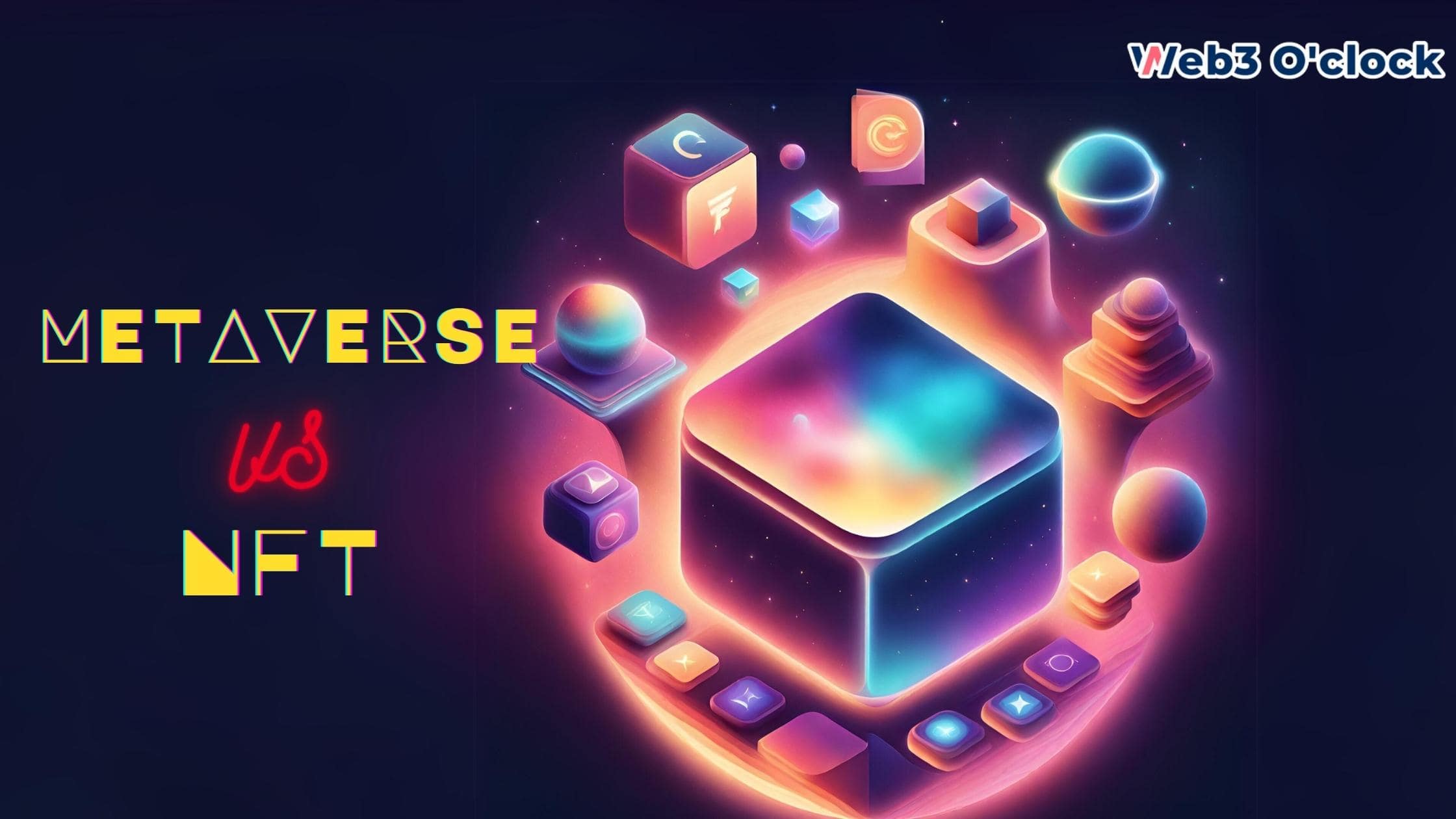Physical Address
304 North Cardinal St.
Dorchester Center, MA 02124

The rise of blockchain technology has given birth to some of the most innovative ideas of the 21st century. Among these, NFTs (Non-Fungible Tokens) and Metaverse are two of the most talked-about technologies. While NFTs have gained a lot of popularity in the past couple of years, Metaverse is still in its early stages of development. In this article, we will explore the differences and similarities between NFTs and Metaverse, their use cases, and their potential implications for the future.
NFTs are digital assets that represent ownership of a unique item, such as a piece of artwork, a video, or a tweet. They are stored on a blockchain, making them secure and tamper-proof. NFTs work on the principle of scarcity, meaning that they are one-of-a-kind and cannot be duplicated. The ownership of an NFT is recorded on the blockchain, allowing the owner to prove their ownership of the item.
The popularity of NFTs has grown exponentially in the past year, with some NFTs selling for millions of dollars. The benefits of NFTs include the ability to establish ownership and authenticity of digital assets, the ability to monetize digital assets, and the potential for new business models for artists and creators. However, there are also drawbacks to NFTs, such as the potential for fraudulent activity and the environmental impact of blockchain technology.
The Metaverse is a virtual world that allows users to interact with each other and with digital objects in a three-dimensional space. The concept of the Metaverse has been around for decades, but recent advancements in technology have made it more feasible than ever before. Metaverse platforms allow users to create avatars and explore virtual worlds, complete with virtual real estate, virtual currencies, and virtual marketplaces.
The benefits of Metaverse include the potential for immersive experiences and social interaction, the ability to create and customize digital identities, and the potential for new business models for developers and entrepreneurs. However, there are also drawbacks to Metaverse, such as the potential for addiction and the lack of real-world consequences for actions in the virtual world.
While NFTs and Metaverse are two distinct technologies, they are not mutually exclusive. NFTs can be used within the Metaverse to represent ownership of virtual assets, such as virtual real estate, virtual art, or virtual collectibles. Likewise, Metaverse platforms can use NFTs to establish ownership of virtual assets and enable the creation of a virtual economy.
The potential for NFTs and Metaverse to coexist is significant. NFTs can add value to the Metaverse by creating a sense of ownership and scarcity for virtual assets. Metaverse can add value to NFTs by providing a platform for NFTs to be displayed and interacted with in a virtual space. The possibilities for collaboration between NFTs and Metaverse are endless and can create new opportunities for artists, creators, and entrepreneurs.
NFTs have already been used in a variety of ways, from selling digital art to creating unique gaming items. In the Metaverse, NFTs can be used to represent ownership of virtual real estate, virtual art, and virtual collectibles. For example, virtual real estate in the Metaverse can be sold as NFTs, allowing buyers to establish ownership of a virtual property.
Metaverse platforms can be used for a variety of purposes, such as gaming, socializing, and education. In gaming, Metaverse platforms can create immersive experiences for players, allowing them to interact with each other in a virtual space. In socializing, Metaverse platforms can provide a virtual space for people to connect with each other from all over the world. In education, Metaverse platforms can be used to create virtual classrooms and immersive learning experiences.
The potential for use cases for NFTs and Metaverse is limitless. As these technologies continue to evolve and gain popularity, new and innovative use cases will emerge.
The future implications of NFTs and Metaverse are significant. As NFTs become more popular, they have the potential to revolutionize the way we think about ownership and value. NFTs can be used to represent ownership of any type of asset, from digital art to physical real estate. This opens up new possibilities for creating a digital economy based on the ownership and exchange of digital assets.
Metaverse, on the other hand, has the potential to change the way we interact with each other and with digital objects. The ability to create immersive experiences in a virtual space can have implications for gaming, education, socializing, and more. The Metaverse can create new opportunities for entrepreneurs and developers to create businesses and experiences that were previously impossible.
However, there are also potential challenges and limitations to the growth and development of NFTs and Metaverse. The environmental impact of blockchain technology is a significant concern, and there is a need for more sustainable solutions. The potential for addiction and the impact on mental health is also a concern, and there is a need for responsible use of these technologies.
In conclusion, the rise of blockchain technology has given birth to innovative ideas such as NFTs and Metaverse, which have significant implications for the future. NFTs have the potential to revolutionize ownership and value in the digital world, while Metaverse has the potential to transform the way we interact with each other and with digital objects. While these technologies have their benefits, there are also concerns such as the environmental impact of blockchain technology and the potential for addiction. Nonetheless, the possibilities for collaboration between NFTs and Metaverse are endless, and they can create new opportunities for artists, creators, and entrepreneurs. As these technologies continue to evolve, it is crucial to be mindful of their potential implications and use them responsibly.
FAQs